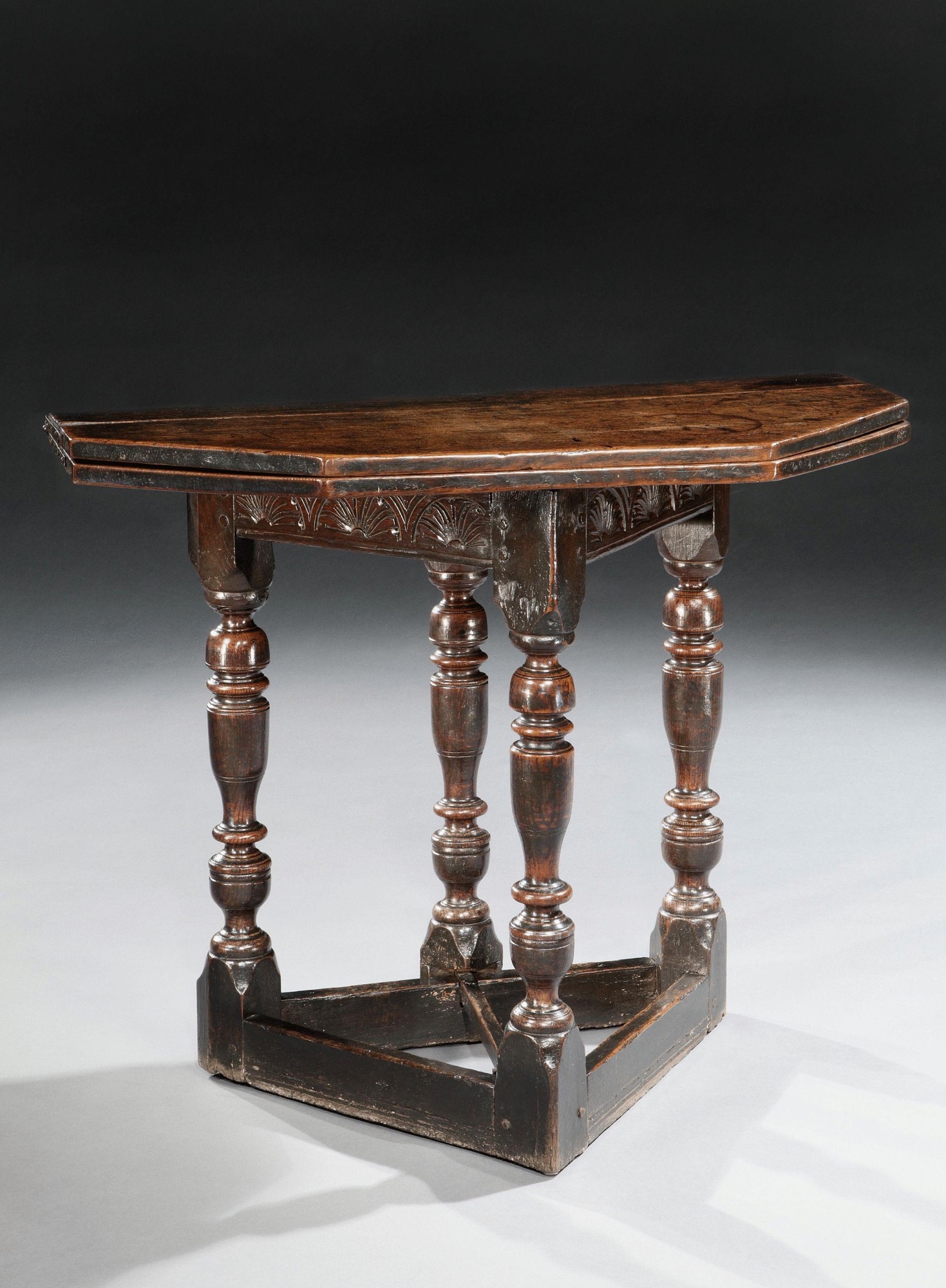A museum quality, early-17th century, carved oak credence table from Binghams Melcombe, Dorset, ex Lord Southborough & Longridge Collections
10919
The octagonal, fold-over top with original iron hinges. The triangular base with a crisply, carved lunette frieze. Standing on with bulbous-turned legs with chamfered edges on the blocks. The rear centre leg with rectangular, pegged stretchers above and below pulling out to support the top. Bearing a small ivorine label to underside '188'. This table would have originally been fitted with a platform over the stretchers but the developed lustrous patina shows that this was removed certainly over 100 years ago.
This is the earliest type of small table, evolving from larger pieces of Elizabethan furniture, in Royal and Noble houses. Originally these were placed beside the table where the family ate for the ceremonial tasting of food and drink for poisons. After the need for the ceremony had disappeared the name still survived, and the table was used for the display of special dishes and plate. Although the name is still associated with church furniture these tables were only made during the late 16th/early17th century for a period of around 25 years and, as they were only used in the finest houses, few were made and surviving examples are very rare.
This table is almost unique amongst credence table construction with a loose fitted rear support rather than a gate to enable the fold-over top to rest when open. It was illustrated in Wolsey & Luff and for many years was part of Sam Wolsey's private collection. It later formed part of Lord Southborough's Collection. The provenance and authenticity are impeccable, and I have seen none other to compare with it.
Height closed 80 cm., 78 cm., Height open 78 cm., 30 ¾ in., Length 95 cm. 37 ¼ in.,
Extended Depth 95 cm., 3 ft., 1 ¼ in., Closed Depth 47 cm., 18½ in.
Top thickness 2 cm., 1 ¾ in.,
Illustrated in Wolsey and Luff, Furniture in England, The Age of the Joiner 1968, fig. 72 and 73 where it is wrongly identified as cedarwood. Illustrated in Sothebys Catalogue of Good English Oak Furniture, the property of the late, Lord Southborough, 1982, lot 25 where it is correctly identified as oak
17th Century
1625
oak
English
Binghams Melcombe, Melcombe Horsey, Hilton, Dorset, Lord Sothborough. Longridge Collection.

































